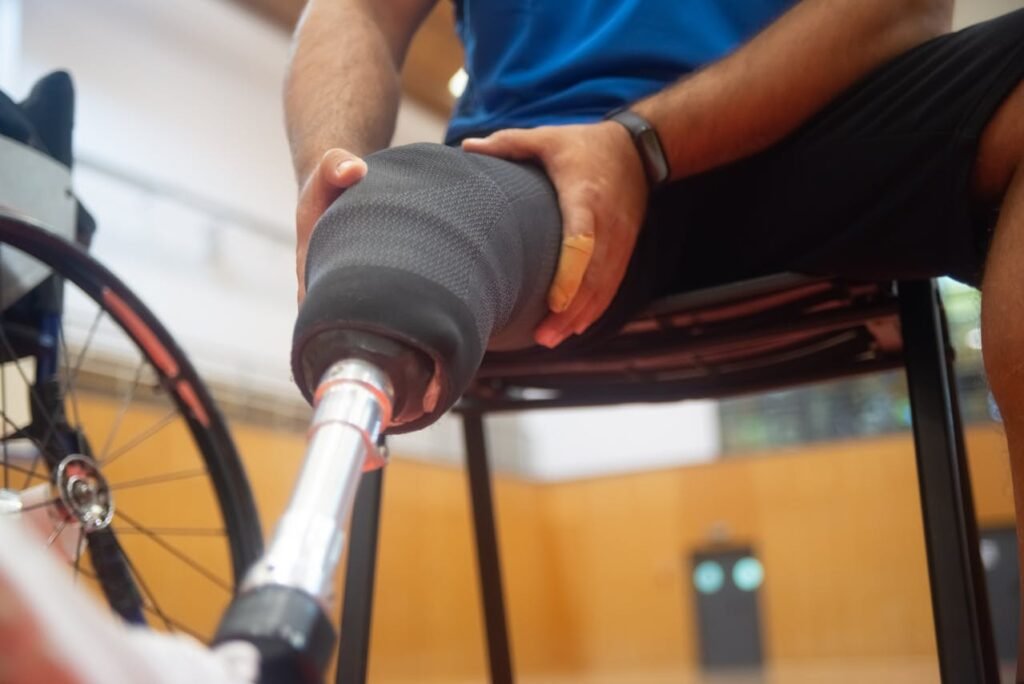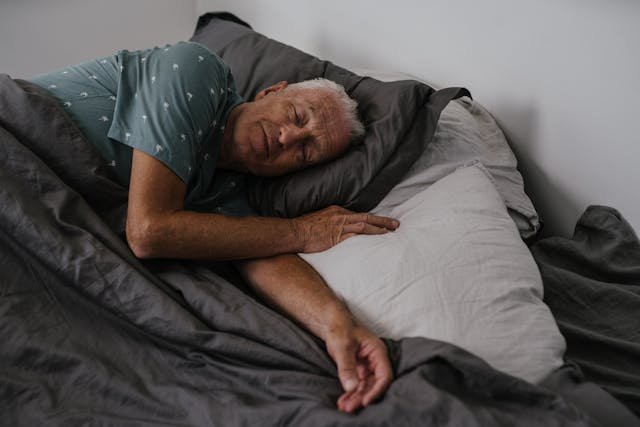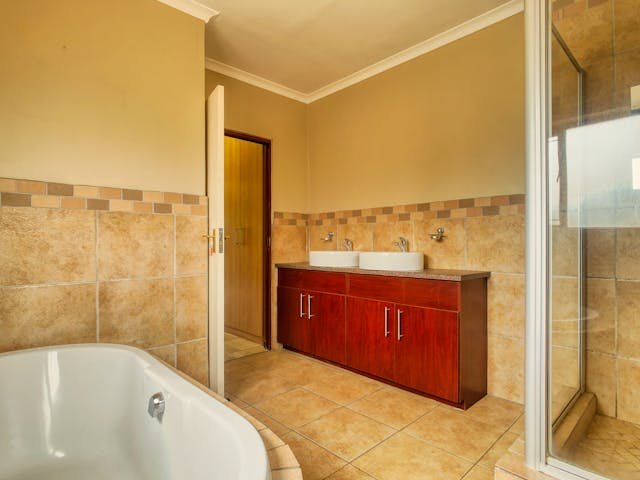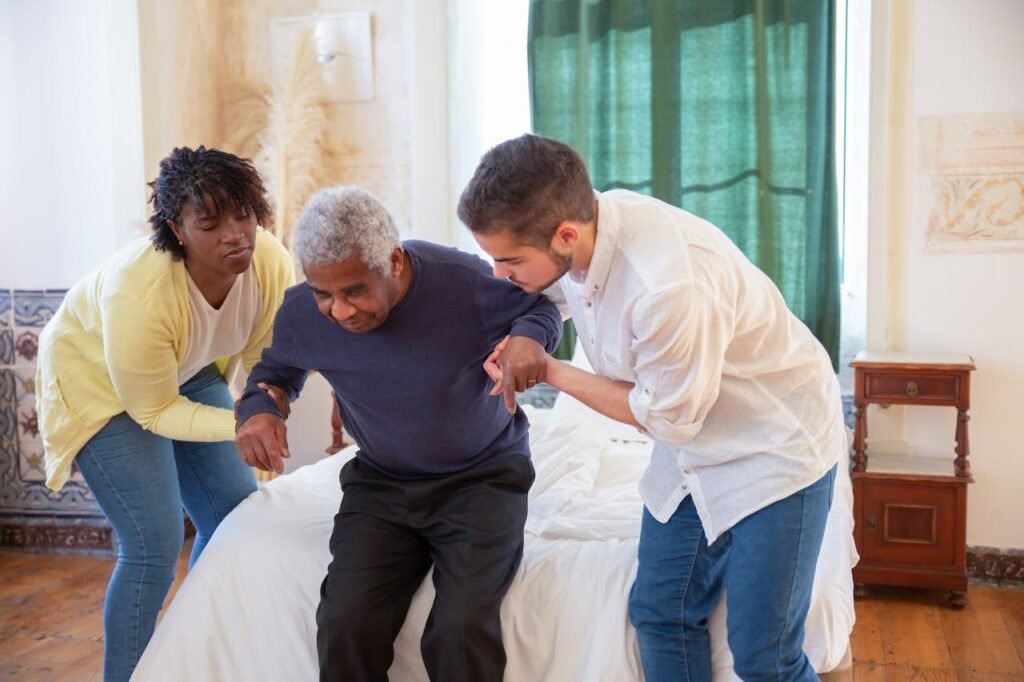As we grow older, the little things around the house can start to feel a bit tricky—especially for seniors using prosthetic limbs. A small step can look taller, a slippery floor feels riskier, and a dimly lit hallway becomes a challenge. But the good news is that most of these problems can be fixed with simple changes at home. You don’t always need expensive renovations or fancy equipment. With a few thoughtful tweaks, every room can become safer, easier to move around in, and more comfortable for everyday living.
At RoboBionics, we work closely with people who use prosthetics every day. We see how the right environment can make a world of difference. Seniors using prosthetic hands or legs often tell us that once their home feels safer, their confidence grows. They start moving freely again. They cook, read, water their plants, and go about their day with ease. That’s what real independence looks like.
This guide will walk you through simple, room-by-room home modifications that make life smoother and safer for seniors using prosthetics. We’ll start from the entrance and go all the way to the bedroom and bathroom. Each section is filled with small, practical ideas—things you can do today without needing special tools or big budgets.
Think of this as your gentle home safety walkthrough. Together, we’ll turn every corner of your house into a space that supports balance, movement, and comfort—so you or your loved one can live with more peace of mind and less worry.
The Entrance and Living Room
Making the Entrance Safe and Welcoming

The entrance is the first step to a safe home. It’s where comfort and confidence begin for seniors using prosthetics. A clear, well-lit pathway can make walking easier and reduce the fear of tripping or slipping.
Start by making sure the ground outside the door is level. Uneven tiles or loose stones can cause stumbles. If there’s a step, consider adding a small ramp. Even a gentle slope can help a lot for those using a prosthetic leg.
Lighting matters, too. Place a bright bulb above the entrance and another near the gate if possible. Motion-sensor lights are a great option—they switch on automatically when someone approaches. This saves energy and adds safety, especially after dark.
Try to keep the area clutter-free. Shoes, doormats, or flower pots near the door might seem harmless, but they can cause someone to lose balance. Keep only what’s necessary and make sure it’s neatly arranged.
Choosing the Right Flooring at the Entrance
The kind of flooring you have can make a huge difference. Smooth, non-slippery surfaces are best. Avoid high-gloss tiles or mats that can slide easily. If you love rugs, pick ones with rubber grips underneath to keep them steady.
Rubber or vinyl flooring works very well for senior safety. It’s soft on the joints and gives a good grip to prosthetic users. Wooden floors can also be fine as long as they’re not too polished.
If water often collects near the entrance during rain, make sure there’s a small drain or cover the area to prevent puddles. Even a little moisture can make walking risky for someone with a prosthetic leg.
Keeping Doors Easy to Use
Heavy doors can be difficult for seniors to open. Replacing door knobs with lever-style handles makes life easier, especially for those using a prosthetic hand. They require less strength and allow a smoother motion.
Automatic door closers can also help, but make sure they don’t slam shut too quickly. If they do, it can make a person lose balance or feel rushed. A soft-close mechanism works best.
Check the width of your main door. A slightly wider doorway allows easy entry for someone using mobility aids like crutches or walkers along with a prosthesis. Even a few extra inches can make a huge difference.
Setting Up a Safer Living Room
Once inside, the living room becomes the heart of the home. It’s where family gathers, guests visit, and most daily movement happens. Keeping this space open and safe helps seniors move with ease and confidence.
Start by arranging furniture in a way that leaves enough walking space. Avoid narrow paths or sharp corners that can hit a prosthetic limb while turning. Think about how you naturally walk through the room and clear that route.
Keep cords, chargers, or loose cables off the floor. These small things are easy to overlook but can be dangerous. Use cord clips or run them behind furniture instead.
Light and Visibility Matter
Dim corners can make movement harder, especially for seniors still getting used to their prosthetic limbs. Good lighting makes a big difference. Place lamps in dark corners or use ceiling lights with soft, even brightness.
Try adding light switches near every entrance. Rocker-style switches are easier to use than tiny buttons, especially for someone wearing a prosthetic hand. You can also consider smart lights that can be turned on with voice commands.
Nightlights are another simple fix. Place them along hallways or near furniture edges. This helps prevent stumbles when moving around at night.
Choosing the Right Furniture
The height and shape of furniture matter more than most people realize. Sofas that are too soft or low can be tough to get up from. Choose firm, medium-height chairs and couches that support the body without sinking.
Tables should have rounded edges instead of sharp corners. You can also add corner protectors to make them safer. For coffee tables, pick ones that don’t take up too much space—this gives more room to move freely.
If you have heavy rugs under your furniture, use non-slip pads underneath. This keeps them from moving when you walk or shift your prosthetic foot.
Balancing Style and Safety
A safe room doesn’t have to look plain. You can make it beautiful and practical at the same time. Choose bright curtains that let in natural light but still give privacy. Add a few plants to bring life to the room, but place them where they won’t block pathways.
Wall-mounted shelves are a great idea—they free up floor space while keeping things within reach. Just make sure they’re placed at a height that’s comfortable to access without stretching too much.
Consider using light colors for walls and floors. They reflect more light and make the room look brighter, which helps seniors see clearly as they move.
Creating a Rest Zone
Even in the living room, it helps to have a small rest area. A sturdy chair with good arm support near the main pathway is perfect. This gives seniors a spot to pause, sit, or adjust their prosthesis if needed.
Keep a small side table nearby for water, a phone, or reading glasses. These tiny details add a sense of comfort and safety. They remind seniors that their home is built for their needs, not against them.
Making Technology Work for You
Smart home devices can make daily life much easier. Voice assistants can control lights, fans, or TVs without having to move around. Smart plugs let you switch appliances on or off through your phone.
If you use these, make sure the setup is simple and reliable. Technology should make things easier, not more confusing. Choose products that are easy to understand and maintain.
The Kitchen and Dining Area
Designing a Safer Kitchen Layout
The kitchen is one of the most used rooms in any home. For seniors using prosthetics, it should be a space that feels safe, organized, and easy to move around in. Every corner of the kitchen should support smooth motion without causing strain or worry.
Start with the layout. Keep commonly used items like plates, cups, and utensils at waist or shoulder height. This prevents the need for bending or stretching, which can be hard when balancing with a prosthetic leg or handling items with a prosthetic hand.
Avoid placing too many things on countertops. A cluttered surface makes it difficult to find items quickly and can increase the chance of spills. Instead, keep only the essentials out, and store the rest neatly in drawers or shelves within easy reach.
If you can, arrange your kitchen in a U-shape or L-shape. This allows you to move easily between the stove, sink, and counter without taking long steps or turning too much. It also keeps everything within arm’s reach.
Choosing Safer Kitchen Flooring
The kitchen floor sees a lot of action—spills, splashes, and sometimes slippery spots. The right flooring can make a big difference in preventing falls. Avoid glossy tiles or polished marble. They might look elegant but can be risky when wet.
Opt for materials like textured ceramic tiles, vinyl, or anti-slip laminate. These provide better grip and are easier to clean. If your floor tends to get wet while cooking or washing, keep absorbent mats near the sink and stove—but make sure they have non-slip backing.
It’s also a good idea to wear flat, rubber-soled shoes inside the kitchen. They give extra grip and balance, especially when moving with a prosthetic leg.
Safe Storage and Organization
How you store things affects how safely you can move in the kitchen. Heavy items like pots and pans should go in lower drawers rather than upper cabinets. Lighter things, such as plates and dry goods, can stay at mid-level shelves.
Pull-out drawers are easier to handle than deep cupboards. They allow you to see everything without bending or reaching too far. If you can, install soft-close drawers to prevent them from shutting too fast or pinching fingers.
Use clear containers with wide openings for ingredients like rice, sugar, or flour. Labels in large print help seniors identify items easily. If you’re using a prosthetic hand, try containers with flip lids instead of screw tops—they’re simpler to open.
Working Safely Around Heat and Appliances
Cooking with confidence means feeling safe around heat and moving parts. For seniors with prosthetic hands, knobs on stoves or ovens can be tricky to handle. Replace them with large, easy-grip knobs or consider an induction cooktop with touch controls.
Keep handles of pots and pans turned inward while cooking. This prevents them from catching on a prosthetic or getting accidentally knocked over. Always use lightweight cookware—it’s easier to lift and control.
Microwaves should be placed on counters rather than high shelves. Lifting hot containers from above shoulder height is never a good idea. Similarly, keep electric kettles and toasters close to the edge of the counter but not too close to the edge that they risk falling.
If you often use both hands while cooking, non-slip mats under cutting boards or bowls help keep them steady. You can also use a one-handed cutting board with spikes to hold vegetables in place.
Managing Light and Space in the Kitchen
Good lighting makes cooking safer and more comfortable. Place bright, even lights over counters, sinks, and stoves. Avoid harsh, white light that causes glare. Warm, soft light helps visibility without straining the eyes.
If shadows fall across your cooking space, consider under-cabinet LED strips. They’re energy-efficient and make every corner visible. Motion-sensor lights can also help if you move between rooms frequently.
Keep pathways wide and free of obstacles. If the kitchen is small, remove extra stools or carts that block movement. A clear path gives seniors better control over their prosthetic movements and reduces the risk of bumping into objects.
Dining Area Comfort and Safety
The dining space should be cozy, bright, and easy to access. Avoid thick carpets or rugs under the dining table—they can cause uneven footing. Smooth, flat flooring works best for stable seating and standing.
Choose chairs with strong backs and armrests. These make sitting and standing easier, especially for seniors adjusting their prosthetic legs. Round-edged tables are safer and more forgiving in case of bumps or close turns.
The dining table should be the right height—not too low or high. If it’s difficult to pull out chairs, place felt or rubber pads under the legs to help them slide more smoothly. This way, seniors can sit without having to drag or push too hard.
Keeping Meals Simple and Enjoyable
Eating should be a joyful part of the day, not a tiring one. Seniors with prosthetic hands can benefit from utensils with wider or cushioned grips. There are also adaptive forks, knives, and spoons designed to fit comfortably in the hand.
Use lightweight plates and cups with non-slip bases. They’re easier to hold and carry. Plastic or melamine plates can be safer than ceramic ones because they don’t break easily if dropped.
If food spills happen often, keep easy-to-clean placemats on the table. Choose soft fabric or silicone mats that don’t slide. They make cleaning faster and safer.
Managing Kitchen and Dining Technology
Technology can make kitchens smarter and safer. Voice-controlled appliances like smart microwaves or virtual assistants can set timers or read recipes aloud. This helps seniors focus on cooking without juggling too many tasks.
Install smoke detectors with loud alarms and flashing lights. These extra signals help ensure safety, especially if hearing isn’t as sharp.
For extra peace of mind, you can add an automatic gas shut-off valve that turns off the stove if left unattended. It’s a small change that prevents big risks.
Encouraging Confidence in Daily Routines
A well-organized kitchen and dining area doesn’t just make things easier—it builds independence. Seniors feel more confident when they can cook their own meals or share food with family. It gives a sense of control and joy that no machine can replace.
If you live with a senior using prosthetics, encourage them to move slowly at first and test what feels comfortable. Over time, these small adjustments make a big difference.
A safe kitchen is not just about avoiding accidents—it’s about helping someone rediscover the simple joy of daily life, one meal at a time.
The Bedroom and Hallways
Creating a Restful and Safe Bedroom

The bedroom should be the most peaceful and secure place in the home. For seniors using prosthetic limbs, it must also be practical and easy to move around in. The goal is to make every action—from sitting on the bed to walking to the cupboard—feel smooth and effortless.
Start with the bed itself. Choose one that’s at the right height—ideally, when seated, both feet (or prosthetics) should touch the floor comfortably. A bed that’s too high or too low makes standing up difficult and increases the risk of imbalance.
Opt for a firm mattress that supports the back and hips evenly. Soft beds may feel cozy but can make it harder for seniors to shift positions or sit up. If needed, install a sturdy handrail or grab bar near the bed for extra support while getting in and out.
Keep a small table close to the bed for essentials—water, medicines, glasses, and the phone. This prevents unnecessary reaching or standing in the middle of the night.
Lighting and Visibility Around the Bed
Good lighting is vital in the bedroom, especially for nighttime safety. A bedside lamp with an easy-to-reach switch is a must. You can also use touch-based lamps that turn on with a simple tap.
Nightlights along the wall or under furniture are great for guiding the way to the bathroom without turning on harsh overhead lights. Soft, warm light keeps visibility clear while maintaining a calm atmosphere.
If you prefer something smarter, try motion-sensor lights that automatically glow when someone gets out of bed. These small touches make nighttime movement safer and less stressful.
Flooring and Rugs in the Bedroom
The floor in the bedroom should always be smooth and slip-resistant. Avoid glossy tiles or heavy carpets that can make it difficult for a prosthetic foot to move naturally. Wooden or vinyl floors with matte finishes work best.
If you love rugs, place them only where necessary—and use rubber mats or non-slip pads underneath. A misplaced rug edge is one of the most common causes of tripping, especially during low-light conditions.
Keep pathways clear of shoes, chargers, or small stools. A tidy floor not only makes movement easier but also keeps the mind at ease.
Organizing Storage for Accessibility
Cupboards, wardrobes, and drawers should be arranged for easy access. Store frequently used clothes at waist level to avoid too much bending or stretching.
Consider replacing round knobs on cupboards with long, flat handles—they’re easier to grasp using a prosthetic hand. Sliding doors can also be better than swinging ones, as they require less space and effort.
If your wardrobe has a top shelf, use labeled storage boxes for items you don’t use daily. This keeps clutter out of the way while still accessible when needed.
Setting Up a Dressing Space
A small dressing area can be designed for comfort and independence. Place a sturdy chair nearby for sitting while wearing or removing a prosthetic limb. Keep a mirror at a comfortable height so it can be used while sitting or standing.
Make sure the dressing table has good lighting from both sides to reduce shadows. This helps seniors see clearly while grooming or attaching their prosthetics.
If you use skincare or personal care products, choose containers with pump tops instead of twist caps—they’re easier to manage with one hand.
Making the Bedroom Feel Warm and Inviting
Safety is crucial, but warmth and comfort matter too. Soft furnishings, pleasant colors, and cozy textures can make the space feel more personal and relaxing.
Choose curtains that are easy to draw open or close, ideally with a loop or hook system. Avoid heavy drapes that require tugging. If the room gets a lot of sunlight, use light-filtering fabric to keep it cool and bright.
Add a few personal touches like family photos, soft blankets, or favorite books. A warm and familiar environment encourages emotional comfort, especially for seniors adapting to prosthetic use.
Hallways: The Hidden Pathways of Safety
Hallways often connect every important space in a home, yet they’re easy to overlook when thinking about safety. For seniors using prosthetics, hallways must be wide, well-lit, and free of clutter.
Start by ensuring that hallways are clear of unnecessary furniture, decorative stands, or storage boxes. Even a small object left out can become a tripping hazard.
If your hallway is narrow, avoid hanging large paintings or shelves that stick out. A smooth, even wall gives more room to move freely without brushing against obstacles.
Lighting the Pathway Right
Lighting in hallways should be bright but gentle. Use evenly spaced ceiling lights to eliminate dark spots or shadows that can confuse depth perception.
Adding motion-sensor lights along the lower part of the wall or near the floor makes walking at night safer. These lights turn on automatically when someone passes by, saving both effort and electricity.
If the hallway connects to the bathroom or kitchen, install light switches at both ends. This lets seniors turn lights on before entering and off after leaving without needing to walk in the dark.
Support and Stability Along the Hallway
For long hallways, consider adding wall-mounted rails or grab bars. These are especially helpful for seniors who are still building confidence with their prosthetic legs. Even a short section of rail can provide comfort and balance when needed.
Handrails should be sturdy, smooth, and at a height that allows easy grip. Choose round or oval shapes that fit comfortably in the hand. If the walls are textured, make sure the rails stand slightly away from them for better grip space.
If there are steps or level changes along the hallway, mark them clearly with a strip of contrasting color. This visual cue helps prosthetic users gauge depth and avoid missteps.
Managing Doors and Transitions
Moving from one room to another should feel natural, not like crossing a hurdle. Doors that open smoothly and quietly make a big difference.
If a door swings too quickly or feels heavy, adjust the hinges or use a soft-close device. For seniors using prosthetic arms, lever handles are again a great option—they allow easy opening without twisting or gripping too tightly.
Thresholds between rooms should be as level as possible. Even a small bump can disrupt balance. Use threshold ramps or smooth transitions to connect different types of flooring.
Making the Hallway a Welcoming Space
Though hallways are mainly for movement, they can still feel warm and inviting. Use soft-colored walls, simple artwork, and gentle lighting to make them friendly rather than cold or empty.
Place small benches or side chairs near entry points if space allows. These offer resting spots for seniors who need to pause or adjust their prosthetics.
Add a fragrance diffuser or fresh flowers occasionally. Small touches like these make the environment pleasant, showing that safety and beauty can exist together.
Building Confidence in Movement
The bedroom and hallway together form the private heart of a home. These are the spaces where seniors start and end their day. When they can move freely here, it sets a positive tone for everything else they do.
Encourage slow, confident steps. Let them take their time adjusting to new layouts or lighting changes. The goal is not speed—it’s ease, comfort, and control.
A well-designed bedroom and hallway can transform how seniors feel about their independence. Every thoughtful adjustment says, “You are safe here. You belong here.”
The Bathroom and Utility Areas
Making the Bathroom Safe and Slip-Free

Bathrooms are where most falls happen, especially for seniors with prosthetic limbs. Safety here starts with the floor. Avoid shiny tiles or smooth marble—go for anti-skid tiles with texture. If replacing tiles isn’t possible, use rubber mats with suction grips near the shower and sink.
Keep the floor dry at all times. A small squeegee or absorbent mat helps clear water quickly. Make sure drainage is smooth so puddles don’t form.
Installing Grab Bars and Supports
Strong grab bars near the toilet, sink, and shower are must-haves. They give stability while sitting, standing, or shifting balance. Stainless steel bars are best—they’re firm, rust-free, and last long.
Position one horizontal bar near the toilet and another at an angle near the shower. Make sure they’re fixed at a comfortable height for easy reach.
Adjusting Toilet and Sink Heights
A slightly raised toilet seat reduces bending strain on the knees and hips. It makes sitting and standing easier, especially for seniors with a prosthetic leg. You can use a clip-on seat riser if you don’t want to change the entire unit.
The sink should be shallow and positioned at mid-height. Avoid under-sink cabinets—they reduce leg space and make it harder to lean in for washing hands or brushing teeth. Lever or sensor taps are best, as they’re easy to use with prosthetic hands.
Safer Showers and Baths
Showers are safer than tubs since they require less climbing. If a bathtub is necessary, install a sturdy side rail and a non-slip mat inside.
A foldable shower seat lets seniors wash comfortably without standing for long. Handheld shower heads make rinsing easier and more controlled. Keep shampoo and soap within arm’s reach using wall-mounted racks.
Lighting and Visibility
Good light in the bathroom is essential. Install bright, white lights above the mirror and near the shower. Motion-sensor lights that turn on automatically are great for nighttime use.
Avoid fixtures that cast harsh shadows—soft, even light helps seniors see clearly without confusion.
Keeping the Bathroom Clutter-Free
Only keep essentials inside. Too many bottles or baskets can cause tripping. Store cleaning supplies separately in a cabinet. Use wide, easy-to-open drawers for toiletries.
Hooks for towels should be low enough to reach comfortably without stretching. Every item should have a fixed place so seniors can find things easily.
Safety in Utility Areas
Laundry rooms and utility spaces often have wet floors and sharp corners. Keep them bright, dry, and open. Use lightweight baskets with side handles to make carrying clothes easier.
Install sturdy shelves instead of tall cabinets. Keep detergents and cleaning supplies at waist level, not high above. If the washing machine vibrates too much, use anti-slip pads underneath.
Electrical switches should be large and easily reachable. Make sure there’s no water leakage near sockets or appliances.
Building Daily Confidence
A safe bathroom and utility area reduce stress and help seniors maintain dignity in daily routines. They can bathe, groom, and do chores without constant help. That independence builds confidence—and confidence builds happiness.
Outdoor and Garden Safety
Creating a Safe Pathway Outside

The area outside the house deserves as much care as the rooms inside. Uneven steps, loose stones, or slippery tiles can quickly turn risky for seniors using prosthetics. Start by leveling pathways and sealing any cracks or loose tiles.
Choose non-slip outdoor tiles or rough cement finishes that provide grip, even in the rain. If there’s a slope, add a sturdy handrail or side railing for support. For steps, mark edges with bright, contrasting colors—it helps prosthetic users judge depth better and walk confidently.
Lighting outdoors is just as important. Use solar lamps or motion-sensor lights along the walkway and near the main gate. These prevent shadows and make evening walks safer without the need to fumble for switches.
Safer Ramps and Entryways
If there’s a step at the front or back door, consider adding a ramp. The slope should be gentle—steep ramps can feel unsafe. Make sure the ramp surface has grip; textured rubber or rough stone works well.
Keep doorways wide and clear of obstructions like flowerpots or welcome mats that curl up at the edges. A smooth, uncluttered path helps seniors move freely without worrying about tripping.
Setting Up a Comfortable Sitting Area
Outdoor spaces can be a wonderful place for seniors to relax. A small bench or chair near the garden or veranda allows them to enjoy fresh air and sunshine comfortably.
Choose furniture that’s stable and not too low. Lightweight plastic or metal chairs are easy to move but can wobble—so pick ones with solid legs and rubber grips underneath.
Add a small side table for a book, a glass of water, or a cup of tea. The goal is to make the space feel calm, easy, and safe for daily use.
Managing Garden Safety
Gardening is a great way to stay active and happy, but it must be designed thoughtfully. Raised garden beds are ideal—they reduce bending and make planting or watering easier. Keep pathways wide and firm so prosthetic feet can move smoothly without sinking into the soil.
Avoid uneven patches or small stones that roll underfoot. For tools, use lightweight ones with large handles that are easier to grip. A wall-mounted rack keeps them organized and prevents clutter on the ground.
If watering often makes the area muddy, add small drainage channels or gravel strips to guide water away. Clean the path after each gardening session to keep it dry and safe.
Lighting and Visibility Outdoors
Soft, consistent lighting helps seniors move confidently after sunset. String lights, wall-mounted lamps, or solar path lights all work well. Avoid overly bright spotlights—they create glare and dark shadows.
If the garden connects to a backdoor or utility area, keep switches easily reachable. Automatic lights that turn on when someone steps outside are ideal—they save effort and prevent accidents.
Handling Weather and Outdoor Conditions
Weather can quickly change how safe outdoor spaces feel. During monsoons, water can collect on tiles or ramps, making them slippery. Check drainage regularly and clear out leaves or debris that block flow.
In hot seasons, metal railings or chairs can get very warm—cover them with fabric or place them under a shade. A small canopy or umbrella setup keeps outdoor areas usable throughout the year.
Building Confidence Beyond the Doorstep
Outdoor safety gives seniors a sense of independence that goes beyond the home. Being able to step outside, water plants, or sit under the sky restores a feeling of normalcy. It reminds them that life doesn’t shrink with age—it expands when surroundings feel supportive.
Conclusion: Turning Homes into Havens
Creating a safe home for seniors using prosthetics isn’t about big changes. It’s about small, caring adjustments that remove fear and add freedom. Every grab bar, every light, every clear walkway helps build confidence—and that confidence changes everything.
At RoboBionics, we’ve seen how the right environment transforms lives. A person who once hesitated to move freely starts cooking again, going for walks, meeting friends, and smiling more. That’s what accessibility truly means—giving people the power to live fully and proudly.
If you’re planning to make your home safer, start with one room. Notice how even small tweaks bring comfort and peace. Over time, your home becomes not just a place to live, but a space that supports independence and joy.
And if you or your loved one uses a prosthetic limb, remember—you’re not alone. We at RoboBionics are here to help you every step of the way. Whether it’s choosing the right prosthetic or learning how to make life easier with it, our team is always ready to guide you.
You can schedule a free demo or consultation with our experts to explore how Grippy™—our advanced, made-in-India bionic hand—can help bring comfort and control back into your daily life.
Visit www.robobionics.in/bookdemo to book your session today.
Your home, your life, and your independence—each one deserves care. Let’s make them all safer, together.



